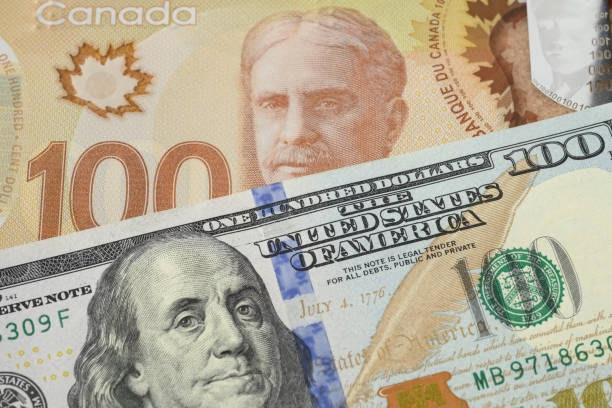The Canadian dollar (CAD) has been losing ground against major currencies, particularly the U.S. dollar (USD), raising concerns among investors, businesses, and travelers. In this article, we’ll break down the key reasons behind the loonie’s decline and what it means for Canada’s economy.
Why Is the Canadian Dollar Dropping?
1. Strong U.S. Dollar Dominance
The Federal Reserve’s hawkish stance on interest rates has kept the USD near multi-month highs. With the U.S. economy showing resilience and inflation remaining sticky, the Fed has delayed rate cuts, boosting the greenback’s appeal.
Meanwhile, the Bank of Canada (BoC) appears more dovish, with expectations of potential rate cuts later this year. This policy divergence is pushing USD/CAD higher.
2. Falling Oil Prices Hurt the Loonie
Canada is a major oil exporter, and the Canadian dollar is highly correlated with crude prices. Recent declines in oil due to weaker global demand and oversupply concerns have dragged the loonie lower.
3. Weak Canadian Economic Data
Recent reports show:
- Slower-than-expected GDP growth
- A cooling job market with rising unemployment
- Lower consumer spending
These factors suggest Canada’s economy is struggling, reducing confidence in the CAD.
4. Global Risk-Off Sentiment
Geopolitical tensions (Middle East, Ukraine) and stock market volatility have investors fleeing to safe-haven currencies like the USD, further weakening risk-sensitive currencies, including the loonie.
What Does a Weaker Canadian Dollar Mean?
Negative Impacts:
- Higher import costs (more expensive electronics, cars, and groceries)
- Pricier travel to the U.S. and abroad
- Increased inflation risk if import prices rise
Positive Effects:
- Boost for Canadian exporters (cheaper for foreign buyers)
- Stronger tourism (Canada becomes more affordable for visitors)
- Better returns for U.S. investors in Canadian assets
Will the Canadian Dollar Recover?
Analysts suggest the loonie could rebound if:
✔ Oil prices stabilize or rise
✔ Bank of Canada delays rate cuts
✔ U.S. Fed starts cutting rates later this year
However, if the USD remains strong and Canada’s economy underperforms, the CAD could stay weak in the near term.
Final Thoughts
The Canadian dollar’s slump reflects broader economic trends—stronger U.S. monetary policy, weaker commodities, and domestic economic struggles. Businesses and consumers should prepare for ongoing currency volatility.
Stay updated with the latest forex trends by subscribing to our newsletter!









